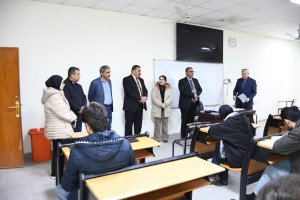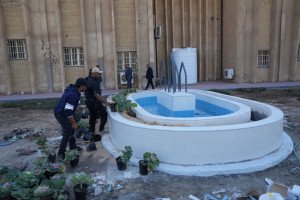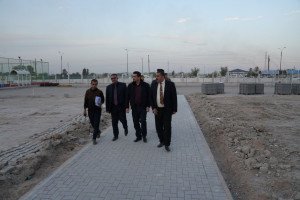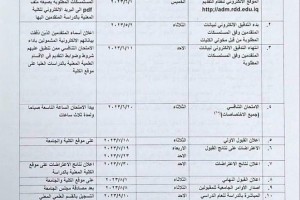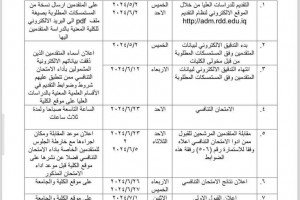
The College of Science at the University of Basrah organized a seminar entitled (Investigation of Rhamnolipid Biosurfactant from Pseudomonas spp. with Studying It’s Effect on Biofilm) by the graduate student Raghad Sharqi Luaibi The study aim toginvestigate thegbiological activity ofgidentified rhamnolipid produced by Pseudomonas aeruginosa and included isolation and identification of Pseudomonas aeruginosa from water and soil samples from different sources and region of Basrah city and primary screening of biosurfactant producer isolates by using different methods and production of rhamnolipid from isolates by using Mineral salt medium with soybean oil and estimation the rhamnolipid concentration from fermentation broth by using L-rhamnose standard curve and extraction of rhamnolipid by using chloroform:methanol and characterization of rhamnolipid chemically by TLC, FTIR, GC-MS, and HPLC and genetically by using rhlAB gene and isolation and identification of pathogenic bacteria from diabetic foot infection and studying the biological activity the rhamnolipid extracts showed antibacterial activity against pathogenic bacteria isolated from diabetic foot infection and showed atibiofilm and anti-adhesive and disruption pre-formed biofilms of biofilm forming bacteria isolated from diabetic foot infection and rhamnolipid extracts showed synergistic effect with two antibiotics GEN and CIP by increasing the inhibition zone diameter and rhamnolipid showed agood antioxidant activity and showed no cytotoxic effect on RBCs and anticancer activity against two cell lines MCF7 and SKG and the study was recommended Using other media and inexpensive compounds to enhance rhamnolipids production, more analytical techniques are required to clarify the chemical composition of rhamnolipid biosurfactants Studying the anti-fungal activity, anti-viral activity and immunomodulatory effect of rhamnolipid, in vivo study of antimicrobial and anti-cancer activity of rhamnolipids, evaluation the toxicity of rhamnolipid by using LD50, using genetic engineering to enhancement of rhamnolipid production, using Scanning Electron Microscopy (SEM) to detect the activity of rhamnolipid as anti-biofilms, testing the synergistic effect of rhamnolipids with more antibiotics, and applying the rhamnolipid in industrial and pharmaceutical areas

